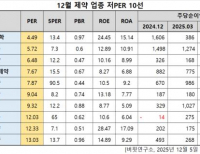Financial Statements Summary
* Financial Statements – The Means of Communication
- Equity security assets are valued at current market value.
* Income Statement Format
- Net income = Earnings
- Gross profit (or Gross margin) = Sales – COGS
- Profit margin = sales – all expenses
- Profit margin percentage = (net income ÷ net sales) x 100%
- Net sales = sales – returns – allowances – freight chgs. – discounts
- Operating Income = Gross profit – Operating expenses
- Income from continuing operations = Income before tax – Tax expense
* Cash Flow Statement
- Cash flow statement (=Funds statement)
· Interest expense appears under Operations in the Cash flow statement
· Issue or redemption of debt is a financing activity.
· Receipt of cash from interest and dividend revenues is an operating activity
· Payment of dividends is a financing activity
· Cash related to the purchase and sale of investments in securities is an investing activity.
· Short-term notes appear as financing on the Cash flow statement (even though it is a current liability)
· Increases in non-cash assets must be subtracted from net income
· Increases in non-cash contra-assets and liabilities must be added to net income
* Free cash flow – an excess of cash flow from operations over cash flow from investing
* To get cash from operations:
1. Add net income
2. Subtract increases in accounts receivable, inventory, and other noncash current assets
3. Add increase in accounts payable and other current liabilities
4. Add depreciation and other contra assets
* To get cash from investing:
1. Subtract increases in PPE and other noncurrent assets
* To get cash from financing:
1. Add increases in notes payable and other noncurrent liabilities
2. Add increases in contributed capital
3. Subtract dividends
* Quick Assets
Quick assets are cash and cash equivalents:
· Acceptable for deposit at face value
· Treasury securities with an original maturity of 90 days or less
* Federal tax law – no allowance for bad debts. Firms must expense the debt when they write it off
* Federal accounting law – allowance method for bad debts
* Long-term construction revenue recognition:
· Completed contract method
· Percentage of completion – the revenue recognized each year is a percentage of the total revenue. This percentage reflects the percent completed, and is usually measured by the percentage of total costs incurred that year.
* Extreme uncertainty revenue recognition:
· Installment method – revenues and expenses are recognized as a function of cash received
· Cost recovery method – revenue is only recognized when total cash received exceeds total cost
* Inventories
If you use LIFO for tax, you must use LIFO for financial reporting.Manufacturing firms may capitalize the following:
· All service department overhead (janitorial, cafeteria, maintenance, etc.)
· Salaries of low-level supervisors
* LIFO:
· Lowest income during periods of rising prices
· Lowest taxes during periods of rising prices
· Most out-of-date balance sheet values for inventory
* FIFO:
· Highest income during periods of rising prices
· Ending inventory figure is close to current replacement costs
When the cost to replace the inventory is lower than the original cost, then this replacement cost is used on the balance sheet.
* Operating margin = sales price – replacement cost (at time of sale)
* (Un)Realized holding gain = replacement cost – acquisition cost
* Inventory profit = realized holding gain on inventory
* Beginning Inventory + Purchases – Ending Inventory = COGS9.)
* Fixed Assets
If a firm constructs its own buildings or equipment, that firm may include interest paid during the construction as part of the asset cost.Depreciation expense calculation methods:
· Straight-line depreciation
· Sum-of-years-digits:
ExpDepr = (Cost - Salvage) * Remng Life ÷ Sum-of-Digits
· (Double) declining balance:
ExpDepr = (Cost – Accumulated Depreciation) * 2 ÷ Years of Life
· Productive output
ExpDepr = (Cost - Salvage) ÷ Units of Life
* GAAP require firms to expense the cost of in-process technologies in the year in which they are acquired.GAAP allow firms to capitalize costs incurred after the point of technological feasibility as assets.
* Net residual value = salvage value = scrap value
* Age of fixed assets = Avg. Accum. Depreciation ÷ Depreciation expense
* Life of fixed assets = Avg. asset value ÷ Depreciation expense
* Return on Assets = Net Income / Average Total Assets (net of deprtn)
* Profit Margin Ratio for ROA = Net Income / Sales
* Asset Turnover Ratio = Sales / Average Total Assets (net of deprtn)
* A/R Turnover Ratio = Sales / Average Accounts Receivable
* Inventory Turnover Ratio = COGS / Average Inventories
* Current ratio = current assets / current liabilities
※출처를 밝히면 자유롭게 인용 가능합니다.

